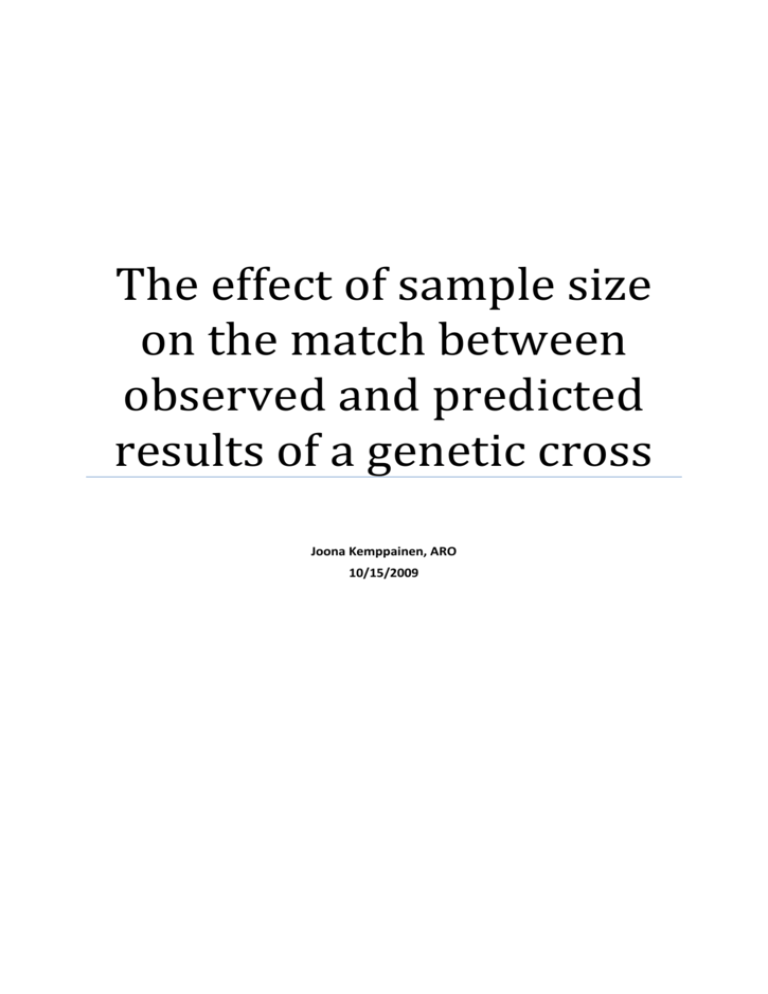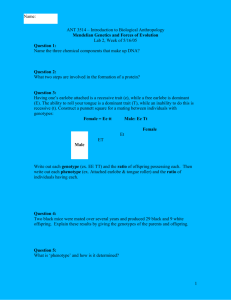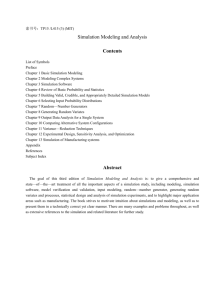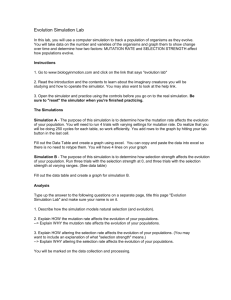The effect of sample size on the match between observed and
advertisement

The effect of sample size on the match between observed and predicted results of a genetic cross Joona Kemppainen, ARO 10/15/2009 Contents 1. 2. 3. 4. Introduction Method and materials Results Appendix 4.1 Chi-Squared tests 1. Introduction The aim of this practical was to study how the size of sample affects the genotypic and phenotypic ratios in a genetic cross using a simulation of two Mendelian monohybrid crosses: Aa x Aa and Aa x aa. From here on, the cross Aa x Aa will be referred as the first simulation and Aa x aa as the second simulation. Predicted genotype ratio from the first simulation is 1:2:1 and phenotype ratio is 3:1. Predicted genotype ratio and phenotype ratio from the second simulation is 1:1. 2. Method and materials The simulation was conducted using two dice. Sample sizes of 5, 10, 50, 100 and 150 were used. 3. Results 3.1 The first simulation Sample size of 5 resulted in genotypes 3 Aa, 1 AA and 1 aa and a phenotype ratio of 4:1. Sample size of 10 resulted in genotypes 8 Aa, 1 AA and 1 aa and a phenotype ratio of 9:1. Sample size of 50 resulted in genotypes 28 Aa, 10 AA and 12 aa and a phenotype ratio of 19:6. Sample size of 100 resulted in genotypes 50 Aa, 25 AA and 25 aa and a phenotype ratio of 3:1. Sample size of 150 resulted in genotypes 78 Aa, 35 AA and 37 aa and a phenotype ratio of 113:37. Running Chi-Squared tests on these results gave an average probability that the differences from predicted values were due to the random factor of 71.56%. 3.2 The second simulation 4. Appendix 4.1 Chi-Squared tests 2nd simulation 1st simulation







